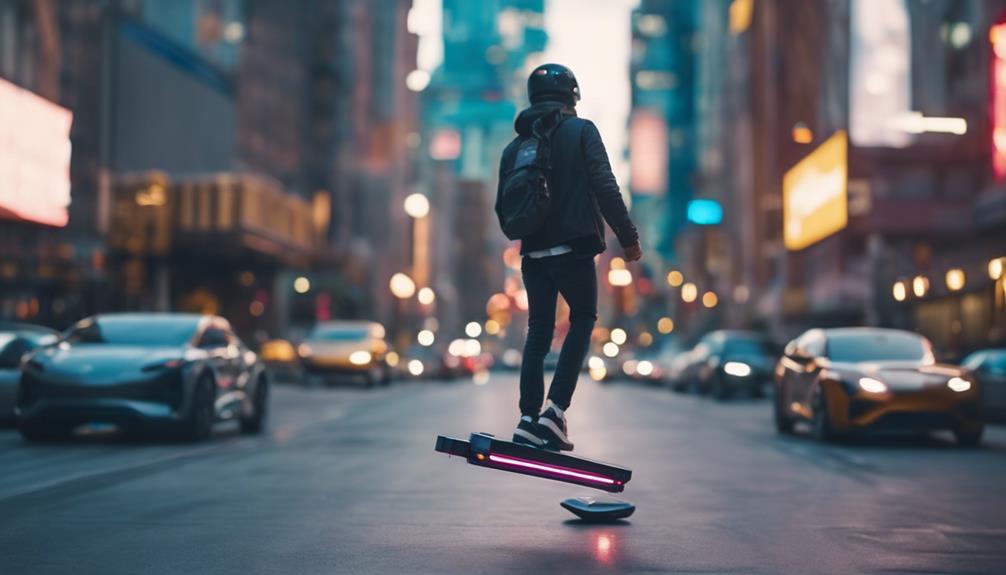Pogo Sticking in SEO refers to the rapid back-and-forth movement between search results and websites, indicating user dissatisfaction and sending negative signals to search engines. This behavior can impact website performance and search engine rankings, making it essential to address. High pogo sticking rates often lead to increased bounce rates, highlighting the need for strategies to prevent this phenomenon. Understanding the reasons behind pogo sticking and implementing effective SEO tactics can improve user satisfaction and overall performance. Further insights into combating pogo sticking await those seeking to enhance their understanding of this vital aspect of search engine optimization.
Key Takeaways
- Pogo Sticking signifies user dissatisfaction with search results.
- High pogo sticking rates impact website performance and search rankings.
- Google Analytics tracks and analyzes pogo sticking patterns.
- Strategies like internal links and user intent alignment help combat pogo sticking.
- Addressing pogo sticking involves improving user satisfaction and overall SEO performance.
Definition of Pogo Sticking

Pogo Sticking, in the domain of search engine optimization, refers to the phenomenon where users rapidly alternate between search engine result pages and websites to locate pertinent information. This behavior is an important ranking factor as it signifies user dissatisfaction with the search results. When users engage in pogo sticking, it sends negative signals to search engines, impacting the ranking of websites adversely. Google Analytics plays a significant role in tracking and analyzing pogo sticking patterns, providing valuable insights for website optimization.
Understanding pogo sticking is essential for website owners and SEO professionals to enhance user experience and improve search rankings. By analyzing pogo sticking metrics, such as bounce rates and time spent on pages, website owners can identify areas for improvement. Implementing strategies like internal linking, ensuring font size readability, creating a user-friendly table of contents, regularly updating content, and offering thorough coverage can effectively reduce pogo sticking behavior. Addressing high pogo sticking rates is imperative in optimizing websites for user satisfaction and search engine visibility.
Impact on User Experience
User experience in the context of pogo sticking is a crucial aspect that directly influences website performance and search engine rankings. When users pogo stick, bouncing back and forth between search results and websites, it sends a signal of dissatisfaction. High pogo sticking rates indicate that users are not finding the information they seek, leading to a negative impact on user experience and potentially decreasing the site's relevance in search results. Google's introduction of the 'People also search for' feature is a response to combat this behavior, aiming to provide users with more exhaustive content and reduce pogo sticking instances.
To prevent pogo sticking, website owners must focus on strategies that enhance user experience, such as incorporating internal links to guide users to related content, ensuring that the site offers updated and all-encompassing information, and aligning content with user intent. By addressing these factors, websites can reduce pogo sticking, improve user satisfaction, and ultimately bolster their search engine rankings.
Relationship to Bounce Rate

The correlation between pogo sticking and bounce rate provides valuable insights into user interaction patterns on websites. Pogo sticking, a phenomenon where users rapidly navigate between search results and a website, is distinct from bounce rate but can have a notable impact on it. High pogo sticking rates often result in increased bounce rates, signaling user dissatisfaction with search results. Recognizing this difference is essential for accurately interpreting user behavior. Monitoring and analyzing pogo sticking behavior can be instrumental in enhancing user experience and mitigating negative outcomes. By implementing strategies to reduce pogo sticking, such as improving search result relevance and website content, websites can positively influence user engagement and even site rankings. Understanding the relationship between pogo sticking and bounce rate is important in optimizing website performance and enhancing overall user satisfaction.
Reasons Behind Pogo Sticking
Unveiling the underlying motivations that drive swift navigation behavior between search results and websites sheds light on the phenomenon known as pogo sticking. High bounce rates often stem from various factors, including clickbait content, poor user experience, and the inability to access relevant information quickly. Clickbait headlines, crafted to attract clicks but often deceptive, can lead to immediate dissatisfaction when users realize the content does not meet their expectations, prompting them to pogo stick back to search results. Additionally, buried or restricted information within a website frustrates users by making it difficult to find the content they are seeking, further exacerbating pogo sticking behavior. Poor user experience elements such as sluggish site speed, intrusive ads, and confusing layouts can also drive users away, contributing to increased instances of pogo sticking. Addressing these issues and ensuring that websites offer relevant, easily accessible content is pivotal in reducing pogo sticking and enhancing overall user satisfaction.
Addressing Pogo Sticking in SEO

To effectively combat pogo sticking in SEO, strategic optimization of website content is essential. When a user enters a website from search engine results and quickly bounces back, it sends a signal to search engines that the content may not be relevant to the user's query. High pogo sticking rates can negatively impact a website's ranking factors, leading to decreased organic traffic. Addressing pogo sticking involves aligning the content with user intent to improve user satisfaction and reduce bounce rates.
Strategies to Reduce Pogo Sticking
Strategically implementing various user engagement tactics can effectively reduce instances of pogo sticking on websites, enhancing overall user experience and improving SEO performance. One important strategy is to include internal links within the content to encourage users to explore more pages on the site, reducing the likelihood of pogo sticking. Maintaining a font size of at least 15px is vital as it enhances readability, making the content more engaging and encouraging users to stay longer on the page. Including a table of contents in lengthy articles can help users in moving through the material easily, thereby reducing instances of pogo sticking. Additionally, updating content regularly and displaying the last update date signals to users that the information is current and relevant, potentially decreasing pogo sticking behavior. By providing in-depth coverage on a topic, meeting user intent, and implementing these strategies, websites can effectively minimize pogo sticking and enhance user satisfaction.
Future of Pogo Sticking

The evolution of pogo sticking is poised to undergo significant advancements driven by innovations in technology, materials, and design for enhanced safety and performance. Future pogo sticks are likely to incorporate cutting-edge materials that offer improved durability and flexibility, resulting in a better bounce back and overall user experience. Additionally, advancements in technology may enable the integration of digital features such as sensors and smart technology, revolutionizing how pogo sticks are used and enjoyed. As interest in extreme sports and unique recreational activities continues to grow, the pogo sticking industry may see collaborations between athletes, engineers, and designers leading to groundbreaking developments. This collaborative effort could push the boundaries of what is currently possible with pogo sticks, offering users a more thrilling and safe experience. Furthermore, the potential for pogo sticking to become more mainstream may lead to increased visibility in search queries and online results pages, further fueling its evolution and popularity.
Frequently Asked Questions
What Is the Meaning of Pogo Sticking?
Pogo sticking refers to the rapid back-and-forth movement between search results and websites in search of relevant information. High pogo sticking signifies user dissatisfaction with search outcomes, leading to potential negative impacts on website rankings.
What Is Pogo Sticking Behavior?
Pogo sticking behavior refers to the rapid movement back and forth between search engine results and websites. This can increase user frustration, diminish engagement, and waste time and clicks. Identification methods include usability tests and web-analytics tools.
What Is Pogo Sticking in Marketing?
Pogo Sticking in marketing refers to the behavior of users rapidly moving between search engine results and websites. It signifies user dissatisfaction with search results and content relevance, impacting website rankings. Strategies like internal linking aim to reduce pogo sticking rates.
Is Pogo Sticking Hard?
Mastering pogo sticking can indeed be challenging for beginners due to the balance, coordination, and timing required. With practice and dedication, individuals can overcome these initial difficulties and improve their skills, making pogo sticking a rewarding and enjoyable activity.
